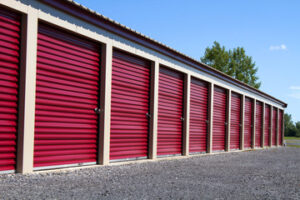Whether you need temporary storage during a move or have too much clutter to manage, Mini Storage Skaitook unit is the perfect solution. These compact spaces are ideal for storing boxes, seasonal decorations or excess furniture.

With a variety of sizes and affordable rental rates, Mini Storage is an essential service for homeowners and business owners alike.
Decluttering is more than just a chore; it’s an opportunity to transform your home, office, or workspace into an environment that promotes productivity and relaxation. But it can be a daunting task that requires some serious organizational skills. Whether you’re just starting to get your home in order, or you’re facing a sudden shift in your lifestyle, Mini Storage can help.
A mini storage facility is essentially a “mini-warehouse” where customers can rent space for an affordable fee to store their belongings temporarily. Customers can choose from a wide range of sizes to find the perfect space for their storage needs. Often, these facilities have security features like cameras and gated access to ensure the safety of their tenants’ belongings. They may also have a parking lot to store vehicles and boats.
When choosing a storage facility, be sure to consider the contract length and whether or not the building is insulated. These factors can make a significant difference in cost. You’ll also want to confirm that the facility’s opening hours are convenient for you. This prevents potential inconveniences down the road and allows you to plan accordingly.
Once you’re ready to begin decluttering, it’s a good idea to start with the room where you spend most of your time. This way, you can feel the benefits of your work as quickly as possible. You can also use the Four Box Method, which involves getting four boxes and labeling them “trash”, “sell”, “keep”, and “re-locate.” This makes it easy to get started, even if you’re not able to complete the whole process right away.
Once you’ve completed your decluttering, it’s time to put your belongings in a safe and secure place. Using a self-storage unit is an affordable option that can save you money in the long run by allowing you to avoid costly renovations or downsizing. Plus, it’s a great alternative to putting items into the attic or garage, which can lead to pests and moisture damage.
Organizing
If you are looking for a more organized storage unit, there are some easy things you can do. One is to make a map of where everything is in your space. This makes it easier to find items you may need in the future, without having to go through every box in your unit. It is also a good idea to keep this map taped inside your storage space so you can refer back to it when needed.
Another way to organize your storage space is by arranging similar items together. For example, you can store blankets together and boxes with clothes in them. You can also use different colors to label different types of items, such as beach supplies or holiday decorations. Taking the time to sort and pack your items properly will save you a lot of trouble when it comes to finding them later on.
The best way to maximize your storage space is by utilizing shelves. Depending on the size of your unit, shelving can be very affordable, and it will also help you keep your items organized. Shelving is especially useful for storing large items like books or furniture. It can also be used to store clothing and shoes, as well as a variety of other smaller items.
BUSINESS OWNERS
Many businesses are turning to mini storage for help with overcrowded work areas. Whether they need to move inventory to make room for new products or need to store seasonal items, a mini storage unit can be a great solution. In addition to retail establishments, many light industry companies are using mini storage units to store their equipment and paperwork.
Organizing your storage space can be a difficult task, but it is essential for keeping your items safe and accessible. By following these simple tips, you can ensure that your belongings are kept safely and conveniently.
Lifestyle Changes
Storage is an essential part of modern life. With consumer culture in full swing, many people end up with more belongings than they can fit in their homes, which is why renting a mini storage unit is often necessary. The following lifestyle changes can lead to a need for extra storage space:
The minimalist movement has gained traction in recent years, encouraging individuals to declutter their homes and prioritize quality over quantity. This lifestyle change has led to an increase in the use of self storage units, as people clear out closets, garages, attics, and other spaces in their homes. The result is a more organized living space and less clutter, which can make it easier to find items when needed.
A study by the CDC found that there is a correlation between living in cluttered environments and decreased happiness. This is because clutter can create chaos and disorganization in the home, resulting in a less than ideal living situation. Thankfully, using a mini storage unit to store excess possessions can help you get back control of your living space, allowing you to enjoy a more relaxed, peaceful environment.
Relocating can be a stressful time, especially if you have to pack up all your personal belongings and move them to another location. Whether you’re relocating for work or moving to care for an elderly parent, the relocation process can leave you feeling overwhelmed and stressed. Luckily, Mini Mall Storage can ease the transition by providing a secure place to store your belongings while you’re in between homes.
Whether you’re moving from a small apartment to a larger one-bedroom or from a large house to a smaller condo, a storage unit is an excellent solution for your transitional housing needs. A storage unit can also come in handy when you’re renovating your home or adding on an addition. With our wide variety of storage units, you’ll have no trouble finding a unit that fits your unique housing needs.
Moving
When you are considering investing in mini storage, you will need to know a few things. For one, the size of your facility is critical. If you do not have enough space, you will not be able to rent out all your units. Ideally, your facility should be designed with a mix of small units (like 5′ x 5′ and 10′ x 10′) and large units (like 10′ x 15′). Also, make sure to include options for ventilation, such as a vent-a-ridge at the ridge cap or vented soffits.
The location of your facility will also play a role in its success. If your facility is located close to a metropolitan area, you will likely attract more customers than if you built your facility in a rural or remote location. Keep in mind that mini storage facilities near urban areas typically charge more for their units.
Another thing to consider is the population of the community in which you are building your facility. This will help you determine how many units you should build. Generally, you should have one unit for every 100 residents in your community. However, this number may vary depending on the specific storage needs of your community. For example, a recreational area might require larger storage units to accommodate boats and trailers. University students, on the other hand, might need smaller storage units to store their belongings over summer break.
Finally, you will want to research the competition in your market. Visit their facilities and identify their strengths and weaknesses. Once you have a clear idea of what to offer, you will be better prepared to compete with your local competitors.
Mini Storage is a great option for anyone who wants to declutter their home, deal with lifestyle changes or relocate. It can be a great way to get organized, save money on rent and avoid the stress of moving. Be sure to prepare and organize your items well before the move, which will help you avoid a mess or forgetting anything important. It is also a good idea to hire a professional moving company to assist you in the process.

